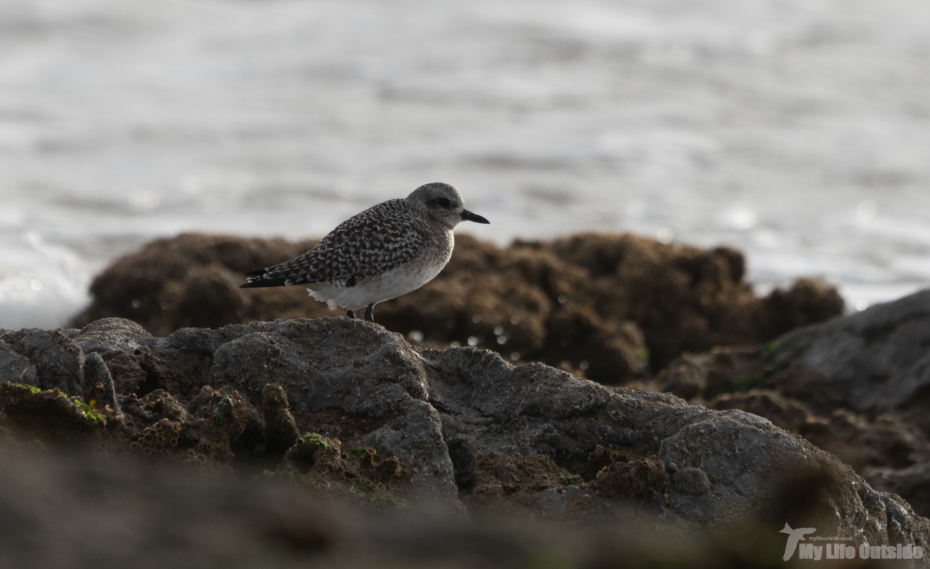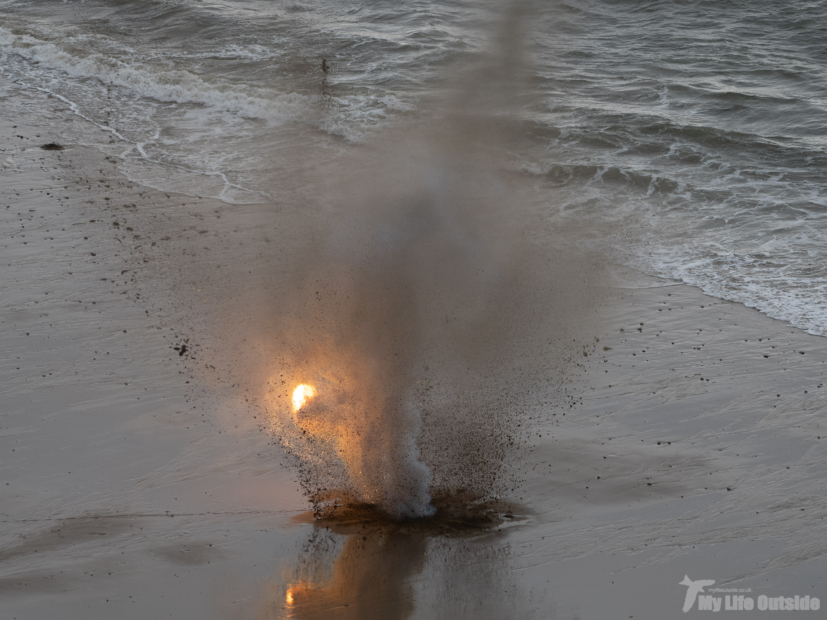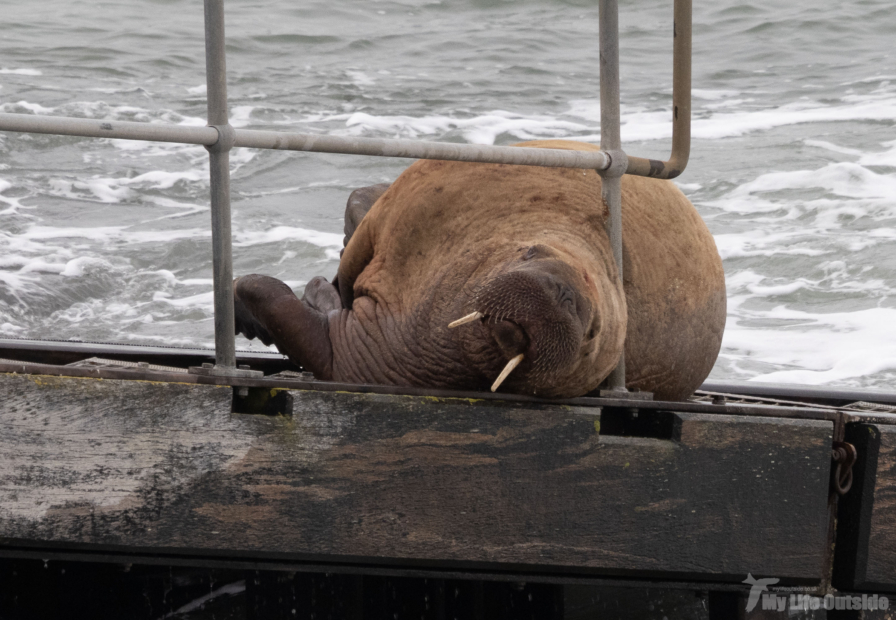
Written on 01/10/2014, Isle of Mull
Walk number seven in the essential ‘Walking in South Mull and Iona’ booklet grabbed my interest from the very start. Anything whose description includes the words untamed, hard going, fossil tree and steel ladder was almost purpose built to awaken my inner-child and today we finally got to turn those pages into reality.

Signposts from the main road above Kilfinichen Bay lead you first along a metalled surface, then gravel, to the National Trust for Scotland’s car park nestled in amongst the trees above Loch Scridain. On such a gloriously sunny day and with an almost perfect forecast we were somewhat surprised to find our vehicle the only one present. As it turned out this was only a foretelling of the remoteness that lay ahead of us, ten miles through some of the most broken and untamed scenery on Mull. And yet the start could not have been more welcoming as we wound our way along a well-made track through pleasant forests with almost unrestricted views across to the Ross of Mull at our left.


After a couple of miles the track, which had been steadily climbing since the start, finally levelled out before dropping us down steeply to Travool house. Here an outdoor education centre makes use of the old estate buildings but the numerous ruins lying all around tell of a landscape which was once far more populated. I wonder whether those lost inhabitants also stopped to appreciate the magnificence of the Abhainn Beul-ach an Tairbh in full spate as it tumbles towards the shore.

Beyond Travool the track negotiates a pair of narrow, wooded ravines before re-emerging at Burg farm. The land here was once worked intensively and even formed a model for modern farming practices during world war two. Much envied at the time little remains today beyond a few stone walls and the two main houses which continue to be inhabited. Perhaps their most famous resident was Chrissie who for ninety years lived and worked on the farm and whose memorial now stands proud a stones throw away.




A little further and we encounter one of the hidden gems of the more remote areas of Mull, wild Goats. First brought to these islands by early settlers they outlived their masters and have since been wandering wild and free. With any selective breeding long since having left the flocks we today find a mixed and varied bunch that are in no way concerned by the passing of weary walkers.


With the track now petering out Dun Bhuirg stands as a last sentry before the path starts its precipitous journey along the towering cliffs of Ardmeanach. Within its ruined walls stands a memorial to Daisy Cheape who drowned in the waters below on 15th August 1896. On that fateful day she and her brothers had set out with the family boatmen to sail to Carsaig but sadly the dinghy capsized and all were rescued except for her.

If the miles behind us had combined beautiful scenery with the mixed fortunes of human endeavour to tame these lands, then what lay ahead could not have been more different. For the next two miles the track to which we’d been faithfully tied was replaced with a narrow sheep track trailed like spaghetti across an ancient and rugged landscape. Little has changed here for centuries and no amount of words or photos can adequately portray the grandeur or scale of Mull at its rugged best, nor the accompanying soundtrack as wave after wave pounds into the rocks below, their sound sent echoing back out to sea from the cliffs stretching ever upwards above us.



And now, with less than half a mile to go before our goal is reached, we come to the steel ladder. To be honest I wasn’t quite sure what to expect but the tale of a returning couple who’d not managed its descent was far from encouraging. As it turned out the twenty foot ladder was only as difficult as the steep ground to be negotiated directly above and below, though perhaps time spent dwelling on the rusted thinness of certain rungs is best kept to a minimum.

Your reward for tackling such unusual means of travel is one of the most spectacular (I’m rapidly running out of superlatives for this walk already) stretches of coastline I’ve yet come across. Basalt columns litter the shore in any variety of shapes and configurations while from the cliffs above two parallel waterfalls come crashing down, an infinite display of rainbows created as the sea breeze plays with their spray.


Here again we encounter a second flock of wild Goats, this one larger and in a more typical setting as they forage along the tide line for seaweed to eat. I creep ever closer and they barely give me a second glance as I settle down against the rocks to try and capture a little of their daily lives. For how many years have they been repeating this ritual against an ever changing modern world which here, now, seems to matter so little. I can’t help feeling like I’ve been transported to another place and time, when lives were simpler and these animals first came to know the Isle of Mull.



By the time I finally drag myself away half an hour has simply been swept aside and we find ourselves slightly hurried to scramble across the remaining rocks and reach our goal. Upon first sight I’m not quite sure what to make of the twisted and fractured geology that sits before me. Basalt columns over a hundred feet tall are stretched and bent into previously unseen shapes which at first detract from the more restrained column like impression that marks out MacCullochs tree. First discovered in 1819 by the man himself this outline marks where a coniferous tree was engulfed by an early lava flow sometime between 55 and 60 million years ago. The cooling effect exerted by the tree was sufficient to bend the surrounding basalt columns towards it while preserving its charcoal remains within.




Standing alone facing evidence of geological processes on a scale that makes your entire existence seem infinitesimally small lends the secluded location a sense of power and awe. In truth I could have sat there all day taking in each formation in ever more detail, but alas with a long walk back and rapidly approaching dusk we had to take our leave. Unlike our Victorian forefathers however we did not feel the need to hammer out our own little souvenir meaning future generations can continue to enjoy this spectacle.
If anything the views on the way back were possibly even more impressive as with the sun now sitting further west the whole of Loch Scridain was lit up beautifully. There was even time to admire one of the herds of Red Deer who had been a regular companion throughout the walk.

When the car finally hove into view it was on weary legs but a feeling of deep satisfaction with which we arrived. Not only had we completed what must rank as one of the most enjoyable walks on Mull but also come face to face with the islands very origins. Now that’s definitely not something you can say every day.






2 Comments
ADRIAN · October 18, 2014 at 10:04 am
This is absolutely superb. I will think very seriously about a trip to Mull.
Adam Tilt · November 4, 2014 at 8:09 pm
I can't recommend it highly enough.